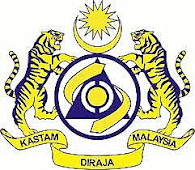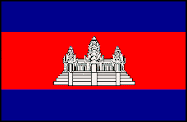There are people who say it's cheaper to get the bus to Melaka Sentral, but me? If I had to scrimp and scrimp to save a few ringgit it'd be a pretty deplorable situation. No - I'd rather travel in comfort and go by taxi.
Above: Melaka Sentral
The taxi arrived here and for all my worrying, the bus didn't leave on time anyway! The bus terminal is quite large with good facilities - banking, food stalls, clothing and a host of other items - it is in fact a small shopping mall and inside a bus station! How neat is that eh?
Above: Plaza Toll
One of the toll booths that are prevalent on Malaysian roads. As you can see, there are many lanes.
Above: KL Airport
On the way we passed an army truck complete with soldiers and weaponry, but the photos all came out very blurry so I haven't put them up. After around two hours, we arrived at KL LCCT airport. I like this airport - it's my favourite. I like the way you can just step outside, go for a gander, there's greenery outside, to the left is a very large eatery and the Air Asia kiosk has some good souvenir items.
I like too, Marrybrown's - their fish is really good. (I am not a McDonald's person - yuk, dreadful stuff).
Above: T 18 - Waiting for the flight home waiting for Flight D7 2722
Well now, here we are - waiting for our flight in the departure lounge. People were going up to the counter to go through, but were told not yet. And every time an Air Asia person came along, up would jump several people.
Above: No, the door is still locked!
This lady tried to open the door. It was still locked!
Above: Our plane - 30 minutes later!
Finally, the doors opened, and we are walking on the tarmac. The time was around 12.30pm and the weather was very hot.
Above: Watching movies - MASH
As this was a daytime flight, I paid the $10 to watch movies for the flight. Watching the re-run of M*A*S*H. Soon it was meal time - eating always helps pass the time doesn't it? It breaks up the journey. I fell asleep later to find it was dark outside - night had fallen. Remember, Melbourne is two hours ahead of Malaysia, but being daylight saving time, it's three hours ahead.
Above: Tullamarine Airport
Back home, and it's 12.15am (9.15pm in Malaysia). I walked outside, lit up a smoke and shivered in the cool air. Had to ring my son who was supposed to be here to pick me up. I had to catch a taxi.
I came back with wonderful memories of my time in both Cambodia and Malaysia. This was my first overseas trip to Asia and it was a wonderful experience. Since then, I have been back to Kuala Lumpur, but the memory of this first trip stands out in my memory.
Below are two poems, one is a Khmer poem called "Angkor Wat II" written by Dan Haag which was inspired by Vikram Prakash's 4-15-03 Angkor Wat lecture. The second is a Malaysian poem called "Fairytale" by Malaysian poet Xin jo Ng.
in pushing back time and oblivion
No matter what new knowledge
you may find circulating about the universe
No matter what exquisite perfections
the architecture of your civilizations may obtain
The jungle lush and green stealing carbon
pumping oxygen comes back for Angkor Wat's splendor
Until the sun in her omnivorous beneficence and warmth,
in her perpetual greed for growth, for incineration swallows up the earth.
It’s nothing but a dream far away
The laughter and the tears and the memories
The truths and the lies and the fantasies
When all mistakes were done and made
Loosen your grip and let it fade
What was never yours will never be
Open your eyes wide and see
There is no beginning there is no end
Only a fairytale woven by hand












































